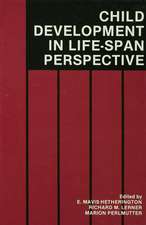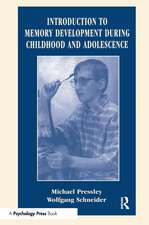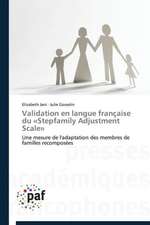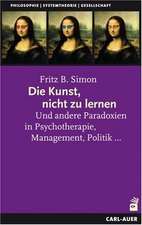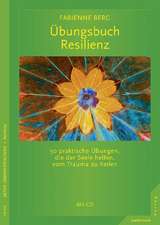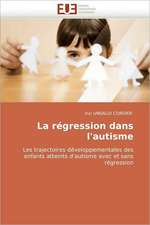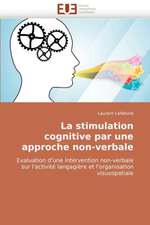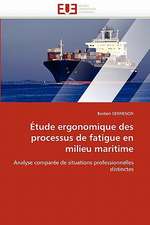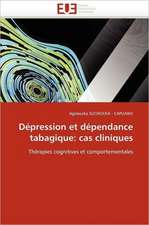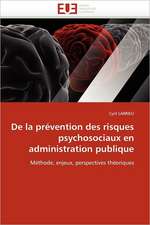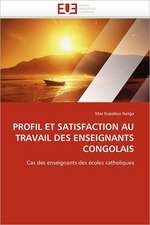Small Area Estimation and Microsimulation Modeling
Autor Azizur Rahman, Ann Hardingen Limba Engleză Hardback – dec 2016
Features
- Covers both theoretical and applied aspects for real-world comparative research and regional statistics production
- Thoroughly explains how microsimulation modeling technology can be constructed using available datasets for reliable small area statistics
- Provides SAS codes that allow readers to utilize these latest technologies in their own work.
Dr Azizur Rahman is a Senior Lecturer in Statistics and convenor of the Graduate Program in Applied Statistics at the Charles Sturt University, and an Adjunct Associate Professor of Public Health and Biostatistics at the University of Canberra. His research encompasses small area estimation, applied economics, microsimulation modeling, Bayesian inference and public health. He has more than 60 scholarly publications including two books. Dr. Rahman’s research is funded by the Australian Federal and State Governments, and he serves on a range of editorial boards including the International Journal of Microsimulation (IJM).
Professor Ann Harding, AO is an Emeritus Professor of Applied Economics and Social Policy at the National Centre for Social and Economic Modelling (NATSEM) of the University of Canberra. She was the founder and inaugural Director of this world class Research Centre for more than sixteen years, and also a co-founder of the International Microsimulation Association (IMA) and served as the inaugural elected president of IMA from 2004 to 2011. She is a fellow of the Academy of the Social Sciences in Australia. She has more than 300 publications including several books in microsimulation modeling.
| Toate formatele și edițiile | Preț | Express |
|---|---|---|
| Paperback (1) | 374.78 lei 22-36 zile | +33.66 lei 6-12 zile |
| CRC Press – 22 mar 2019 | 374.78 lei 22-36 zile | +33.66 lei 6-12 zile |
| Hardback (1) | 742.98 lei 43-57 zile | |
| CRC Press – dec 2016 | 742.98 lei 43-57 zile |
Preț: 742.98 lei
Preț vechi: 906.08 lei
-18% Nou
Puncte Express: 1114
Preț estimativ în valută:
142.17€ • 148.81$ • 118.33£
142.17€ • 148.81$ • 118.33£
Carte tipărită la comandă
Livrare economică 31 martie-14 aprilie
Preluare comenzi: 021 569.72.76
Specificații
ISBN-13: 9781482260724
ISBN-10: 1482260727
Pagini: 522
Ilustrații: 70
Dimensiuni: 156 x 234 x 35 mm
Greutate: 0.88 kg
Ediția:1
Editura: CRC Press
Colecția Chapman and Hall/CRC
ISBN-10: 1482260727
Pagini: 522
Ilustrații: 70
Dimensiuni: 156 x 234 x 35 mm
Greutate: 0.88 kg
Ediția:1
Editura: CRC Press
Colecția Chapman and Hall/CRC
Cuprins
Table of Contents
Preface
Introduction
Introduction
Main Aims of the Book
Guide for the Reader
Concluding Remarks
Small Area Estimation
Introduction
Small area estimation
Advantages of small area estimation
Why small area estimation techniques?
Applications of small area estimation
Approaches to small area estimation
Direct estimation
Horvitz-Thomposn (H-T) estimator
Generalized regression (GREG) estimator
Modified direct estimator
Design-based model-assited estimators
A comparison of direct estimators
Concluding remarks
Indirect Estimation: Statistical Approaches
Introduction
Implicit models approach
Synthetic estimaton
Composite estimation
Demographic estimation
Comparison of various implicit models based indirect estimation
Explicit models approach
Basic area level model
Basic unit leve model
General linear mixed model
Comparison of various explicit models based indirect estimation
Methods for estimating explicit models
E-BLUP approach
EB approach
HB approach
A comparison of three methods
Concluding remarks
Indirect Estimation: Geographic Approaches
Introduction
Microsimulation modeling
Process of microsimulation
Types of microsimulation models
Advantages of microsimulation modeling
Methodologies in microsimulation modeling technology
Techniques for creating spatial microdata
Statistical data matching or fusion
Iterative proportional fitting
Repeated weighting method
Reweighting
Combinatorial optimisation reweighing approach
The simulated annealing method in CO
An illustration of CO process for hypothetical data
Reweighting: The GREGWT approach
Theoretical setting
How does GREGWT generate new weights?
Explicit numerical solution for a hypothetical data
A comparison between GREGWT and CO
Concluding remarks
Bayesian Prediction-Based Microdata Simulation
Introduction
The basic steps
The Bayesian prediction theory
The multivariate model
The prior and posterior distributions
The linkage model
Prediction for moedling unobserved population units
Concluding remarks
Microsimulation Modelling Technology for Small Area Estimation
Introduction
Data sources and issues
The Census Data
Survey Datasets
Survey Datasets
MMT based Model Specification
Model inputs
Generating small area synthetic weights
Model inputs
Generating small area synthetic weights
Model inputs
Gnerating small area synthetic weights
Model outputs
Housing stress
Definition
Measures of housing stress
A comparison of various measures
Small area estimation of housing stress
Inputs at the second stae model
Final model outputs
Concluding remarks
Applications of the Methodologies
Introduction
Results of the model: A general view
Model accuracy report
Scenarios of housing stress under various measures
Distribution of housing stress estimation
Lorenz curve for housing stress estimates
Proportional cumulative frequency graph and index of dissimilarity
Scenarios of households and housing stress by tenures
Estimation of households in housing stress by spatial scales
Results for different states
Results for various statistical divisions
Results for various statistical subdivisions
Small area estimates: Number of households in housing stress
Estimated numbers of overall households in housing stress
Estimated numbers of buyerhouseholds in housing stress
Estimated numbers of public renter households in housing stress
Estimated numbers of private renter households in housing stress
Estimated numbers of total renter households in housing stress
Small area estimates: Percentage of households in housing stress
Percentage estimates of housing stress for overall households
Percentage estimates of housing stress for buyer households
Percentage estimates of housing stress for public renter households
Percentage estimates of housing stress for private renter households
Percentage estimates of housing stress for total renter households
Concluding remarks
Analysis of Small Area Estimates in Capital Cities
Introduction
Scenarios of the results for major capital cities
Trends in housing stress for some major cities
Mapping the estimates at SLA levels within major cities
Sydney
Housing stress estimates for overall households
Small area estimation by household's tenure types
Melbourne
Housing stress estimates for overall households
Small area estimation by household's tenure types
Brisbane
Housing stress estimates for overall households
Small area estimation by household's tenure types
Adelaide
Housing stress estimates for overall households
Small area estimation by household's tenure types
Canberra
Housing stress estimates for overall households
Small area estimation by household's tenure types
Hobart
Housing stress estimates for overall households
Small area estimation by household's tenure types
Darwin
Housing stress estimates for overall households
Small area estimation by household's tenure types
Concluding remarks
Validation and Measure of Statistical Reliability
Introduction
Some validation methods in the literature
New approaches to validating housing stress estimation
Statistical significance test of the MMT estimates
Results of the statistical significance test
Absolute standardised residual estimate (ASRE) analysis
Results from the ASRE analysis
Measure of statistical reliability of the MMT estimates
Confidence interval estimation
Results from the estimates of confidence intervals
Concluding remarks
Conclusions and Computing Codes
Introduction
Summary of major findings
Limitations
Areas of further studies
Computing codes and programming
The general model file codes
SAS programming for reweithing algorithms
The second stage program file codes
Concluding remarks
Appendices.
Preface
Introduction
Introduction
Main Aims of the Book
Guide for the Reader
Concluding Remarks
Small Area Estimation
Introduction
Small area estimation
Advantages of small area estimation
Why small area estimation techniques?
Applications of small area estimation
Approaches to small area estimation
Direct estimation
Horvitz-Thomposn (H-T) estimator
Generalized regression (GREG) estimator
Modified direct estimator
Design-based model-assited estimators
A comparison of direct estimators
Concluding remarks
Indirect Estimation: Statistical Approaches
Introduction
Implicit models approach
Synthetic estimaton
Composite estimation
Demographic estimation
Comparison of various implicit models based indirect estimation
Explicit models approach
Basic area level model
Basic unit leve model
General linear mixed model
Comparison of various explicit models based indirect estimation
Methods for estimating explicit models
E-BLUP approach
EB approach
HB approach
A comparison of three methods
Concluding remarks
Indirect Estimation: Geographic Approaches
Introduction
Microsimulation modeling
Process of microsimulation
Types of microsimulation models
Advantages of microsimulation modeling
Methodologies in microsimulation modeling technology
Techniques for creating spatial microdata
Statistical data matching or fusion
Iterative proportional fitting
Repeated weighting method
Reweighting
Combinatorial optimisation reweighing approach
The simulated annealing method in CO
An illustration of CO process for hypothetical data
Reweighting: The GREGWT approach
Theoretical setting
How does GREGWT generate new weights?
Explicit numerical solution for a hypothetical data
A comparison between GREGWT and CO
Concluding remarks
Bayesian Prediction-Based Microdata Simulation
Introduction
The basic steps
The Bayesian prediction theory
The multivariate model
The prior and posterior distributions
The linkage model
Prediction for moedling unobserved population units
Concluding remarks
Microsimulation Modelling Technology for Small Area Estimation
Introduction
Data sources and issues
The Census Data
Survey Datasets
Survey Datasets
MMT based Model Specification
Model inputs
Generating small area synthetic weights
Model inputs
Generating small area synthetic weights
Model inputs
Gnerating small area synthetic weights
Model outputs
Housing stress
Definition
Measures of housing stress
A comparison of various measures
Small area estimation of housing stress
Inputs at the second stae model
Final model outputs
Concluding remarks
Applications of the Methodologies
Introduction
Results of the model: A general view
Model accuracy report
Scenarios of housing stress under various measures
Distribution of housing stress estimation
Lorenz curve for housing stress estimates
Proportional cumulative frequency graph and index of dissimilarity
Scenarios of households and housing stress by tenures
Estimation of households in housing stress by spatial scales
Results for different states
Results for various statistical divisions
Results for various statistical subdivisions
Small area estimates: Number of households in housing stress
Estimated numbers of overall households in housing stress
Estimated numbers of buyerhouseholds in housing stress
Estimated numbers of public renter households in housing stress
Estimated numbers of private renter households in housing stress
Estimated numbers of total renter households in housing stress
Small area estimates: Percentage of households in housing stress
Percentage estimates of housing stress for overall households
Percentage estimates of housing stress for buyer households
Percentage estimates of housing stress for public renter households
Percentage estimates of housing stress for private renter households
Percentage estimates of housing stress for total renter households
Concluding remarks
Analysis of Small Area Estimates in Capital Cities
Introduction
Scenarios of the results for major capital cities
Trends in housing stress for some major cities
Mapping the estimates at SLA levels within major cities
Sydney
Housing stress estimates for overall households
Small area estimation by household's tenure types
Melbourne
Housing stress estimates for overall households
Small area estimation by household's tenure types
Brisbane
Housing stress estimates for overall households
Small area estimation by household's tenure types
Adelaide
Housing stress estimates for overall households
Small area estimation by household's tenure types
Canberra
Housing stress estimates for overall households
Small area estimation by household's tenure types
Hobart
Housing stress estimates for overall households
Small area estimation by household's tenure types
Darwin
Housing stress estimates for overall households
Small area estimation by household's tenure types
Concluding remarks
Validation and Measure of Statistical Reliability
Introduction
Some validation methods in the literature
New approaches to validating housing stress estimation
Statistical significance test of the MMT estimates
Results of the statistical significance test
Absolute standardised residual estimate (ASRE) analysis
Results from the ASRE analysis
Measure of statistical reliability of the MMT estimates
Confidence interval estimation
Results from the estimates of confidence intervals
Concluding remarks
Conclusions and Computing Codes
Introduction
Summary of major findings
Limitations
Areas of further studies
Computing codes and programming
The general model file codes
SAS programming for reweithing algorithms
The second stage program file codes
Concluding remarks
Appendices.
Notă biografică
Associate Professor Azizur Rahman, PhD, is a statistician and data scientist with expertise in both developing and applying novel methodologies, models and technologies. He is the Leader of “Statistics and Data Mining Research Group” at the Charles Sturt University (CSU), and able to assist in understanding multi-disciplinary research issues within various fields including how to understand the individual activities which occur within very complex scientific, behavioural, socio-economic and ecological systems. His research encompasses issues in simple to multi-facet analyses in various fields ranging from the statistical sciences to the law and legal studies. He has more than 100 scholarly publications including a few books. Prof. Rahman’s research is funded by the Australian Federal and State Governments, and he serves on a range of editorial boards including the International Journal of Microsimulation (IJM) and Sustaining Regions. He obtained several awards including the SOCM Research Excellence Award 2018 and the CSU-RED Achievement Award 2019.
Professor Ann Harding, AO, is an Emeritus Professor of Applied Economics and Social Policy at the National Centre for Social and Economic Modelling (NATSEM) of the University of Canberra. She was the founder and inaugural Director of this world class Research Centre for more than sixteen years, and also a co-founder of the International Microsimulation Association (IMA) and served as the inaugural elected president of IMA from 2004 to 2011. She is a fellow of the Academy of the Social Sciences in Australia. She has more than 300 publications including several books in microsimulation modeling.
Professor Ann Harding, AO, is an Emeritus Professor of Applied Economics and Social Policy at the National Centre for Social and Economic Modelling (NATSEM) of the University of Canberra. She was the founder and inaugural Director of this world class Research Centre for more than sixteen years, and also a co-founder of the International Microsimulation Association (IMA) and served as the inaugural elected president of IMA from 2004 to 2011. She is a fellow of the Academy of the Social Sciences in Australia. She has more than 300 publications including several books in microsimulation modeling.
Recenzii
“The authors describe theories and provide practical applications in economics, behavioural sciences, health sciences, business, psychology, environmental sciences, transportation problems, urban planning, and computational issues in this book. … Some unique features of this book are the following. The historical quotes from early time as far as fifth century are amusing. The references related to SAE are not only thorough but also up to date. The guidance for the readers does ease the readability. I enjoyed reading this comprehensively written book. I recommend this book to sociologists, economists, geographers, statistics and computing professionals.”
—Ramalingam Shanmugam, in the Journal of Statistical Computation and Simulation, June 2019
"The book aims at introducing modern statistical small area estimation methodologies into the framework of spatial microsimulation modelling for a comprehensive presentation, providing a novel approach with much potential in comparative social research and regional statistics production. In my opinion, the strongest methodological developments are in the techniques of generating synthetic spatial microdata at small area levels. This book will be attractive for students, in economics, social sciences and statistics in particular. The increasing use of both SAE and microsimulation methods in different areas of society, such as social planning by government institutions and official or public statistics production by national and international statistical agencies. Finally, I want to congratulate the authors for writing a nice and well readable book on a quite complicated topic."
—Prof. Risto Lehtonen, University of Helsinki
". . .an interesting read for both beginning and more experienced microsimulation modellers. The two authors are well known within the microsimulation community. In this book, they share their experiences and insights into both the more theoretical and empirical aspects of microsimulation modelling. Across disciplines, there are several approaches towards the simulation or projection of small area statistics. However, since these different disciplines make use of different terminologies, there is less cross-pollination than expected (or hoped for). The aim of this book is to show and explain different approaches of small area estimation that are used in different research fields. The book gives an extensive theoretical and empirical overview of different microsimulation techniques and can be of relevance to researchers who want to expand their knowledges on ways to estimate small area characteristics."
~International Journal of Microsimulation
"The authors begin with a detailed classification tree of small area estimation techniques. The text then proceeds to review and describe these techniques. A familiarity with regression techniques and survey methods is assumed throughout. The text then proceeds to present some new small area estimation techniques, validation methods, and a detailed worked example. The appendices provide further details of the worked example and SAS code for the generalized regression weighting tool (GREGWT) method."
~Douglas Dover, International Society for Clinical Biostatistics
—Ramalingam Shanmugam, in the Journal of Statistical Computation and Simulation, June 2019
"The book aims at introducing modern statistical small area estimation methodologies into the framework of spatial microsimulation modelling for a comprehensive presentation, providing a novel approach with much potential in comparative social research and regional statistics production. In my opinion, the strongest methodological developments are in the techniques of generating synthetic spatial microdata at small area levels. This book will be attractive for students, in economics, social sciences and statistics in particular. The increasing use of both SAE and microsimulation methods in different areas of society, such as social planning by government institutions and official or public statistics production by national and international statistical agencies. Finally, I want to congratulate the authors for writing a nice and well readable book on a quite complicated topic."
—Prof. Risto Lehtonen, University of Helsinki
". . .an interesting read for both beginning and more experienced microsimulation modellers. The two authors are well known within the microsimulation community. In this book, they share their experiences and insights into both the more theoretical and empirical aspects of microsimulation modelling. Across disciplines, there are several approaches towards the simulation or projection of small area statistics. However, since these different disciplines make use of different terminologies, there is less cross-pollination than expected (or hoped for). The aim of this book is to show and explain different approaches of small area estimation that are used in different research fields. The book gives an extensive theoretical and empirical overview of different microsimulation techniques and can be of relevance to researchers who want to expand their knowledges on ways to estimate small area characteristics."
~International Journal of Microsimulation
"The authors begin with a detailed classification tree of small area estimation techniques. The text then proceeds to review and describe these techniques. A familiarity with regression techniques and survey methods is assumed throughout. The text then proceeds to present some new small area estimation techniques, validation methods, and a detailed worked example. The appendices provide further details of the worked example and SAS code for the generalized regression weighting tool (GREGWT) method."
~Douglas Dover, International Society for Clinical Biostatistics
Descriere
The book gathers information on the theories, applications, advantages, and limitations of all the small area estimation methodologies. It covers direct small area estimation methods, indirect statistical approaches, including empirical best linear unbiased prediction, empirical Bayes and hierarchical Bayes estimation methods.

